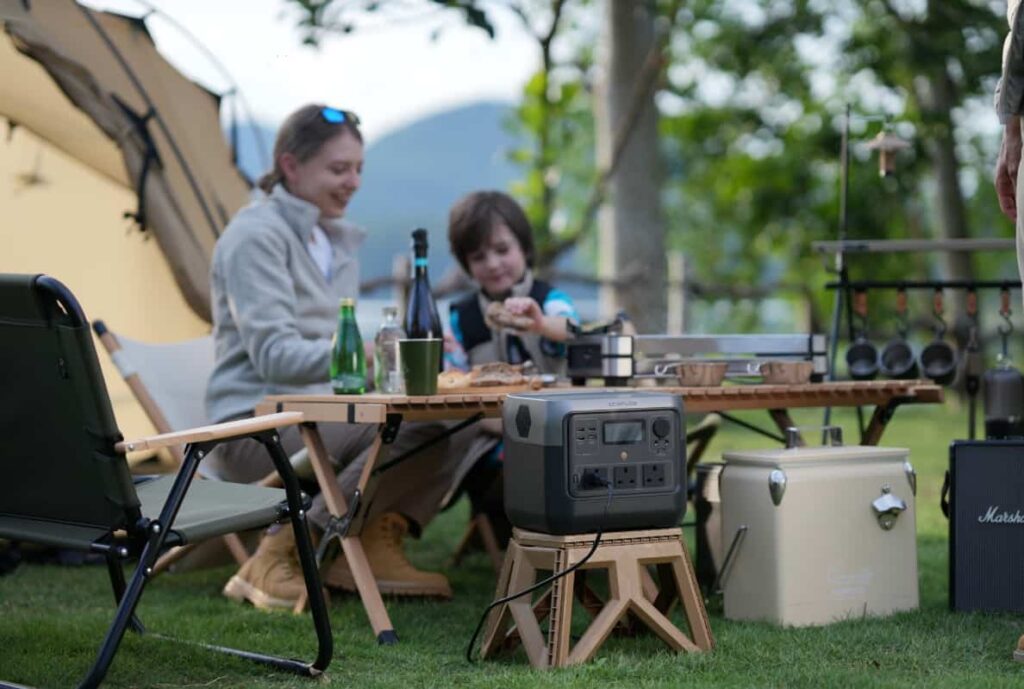Camping is all about getting away from the hustle and bustle of everyday life, reconnecting with nature, and enjoying the great outdoors. But let’s be honest—most of us still want a few modern conveniences while we’re out there. Whether it’s keeping a fridge running, charging a phone, powering lights, or even running a small fan on a hot night, having a reliable power source can make a world of difference. That’s where a camping battery comes in.
But with so many options out there—lithium, AGM, deep-cycle, power packs—how do you know which camping battery is right for your setup? Let’s break it down so you can choose the right battery for your next adventure.
What is a Camping Battery?

A camping battery is essentially a portable power source designed to run your appliances and gadgets when you’re off-grid. Unlike a standard car battery, which is built to provide a quick burst of power to start an engine, camping batteries (often deep-cycle batteries) are designed to deliver a steady amount of power over an extended period.
This means they can keep your devices running for hours, or even days, depending on their capacity and how much energy you’re using. Instead of draining rapidly like a regular car battery would when used for camping, a deep-cycle camping battery discharges power gradually and can be recharged multiple times.
Types of Camping Batteries
Not all camping batteries are created equal, and choosing the right one depends on your needs, budget, and how often you go camping. Here are the most common types:
AGM (Absorbent Glass Mat) Batteries
AGM batteries are a type of lead-acid battery but with a sealed design that makes them more durable and resistant to vibration—perfect for off-road adventures. They hold their charge well, work efficiently in different temperatures, and don’t require maintenance like traditional flooded lead-acid batteries.
While they’re a reliable choice, they do have some drawbacks. AGM batteries are heavier than newer lithium options and can be a bit more expensive than standard deep-cycle lead-acid batteries. However, they’re a solid choice for campers who need a dependable power source.
Lithium (LiFePO4) Batteries
Lithium batteries have become the go-to choice for serious campers, and for good reason. They are significantly lighter than AGM batteries, charge faster, last longer, and can be discharged deeper without damaging the battery. This means you get more usable power in a much lighter and more compact unit.
The downside? Price. Lithium camping batteries are considerably more expensive upfront. However, since they last much longer and perform better, they can actually be more cost-effective in the long run. If you camp regularly or need a high-performance power solution, lithium is definitely worth considering.
Gel Batteries
Gel batteries are another type of sealed lead-acid battery, similar to AGM but with a slightly different internal structure. They are extremely resistant to deep discharges and work well in high temperatures. However, they are generally more expensive than AGMs and don’t charge as quickly.
They’re not as commonly used for camping as AGM or lithium batteries, but they can still be a good option for specific setups.
Portable Power Stations
If you don’t want to deal with wiring, inverters, or external chargers, a portable power station might be the answer. These are all-in-one battery packs that include built-in inverters, USB ports, and AC outlets, making them super convenient for casual campers who just need to charge phones, run small lights, or power a laptop.
They’re not as powerful as dedicated deep-cycle batteries, but for light-duty use, they’re a great plug-and-play solution.
How Much Battery Power Do You Need for Camping?
The amount of power you need depends on what you’re running. If you’re only charging phones and using LED lights, a small battery will do just fine. But if you want to run a 12V fridge, power a CPAP machine, or keep a few other appliances going, you’ll need something with more capacity.
Battery capacity is measured in amp-hours (Ah), and generally speaking, the higher the Ah rating, the longer your battery will last before needing a recharge. A 100Ah battery, for example, can theoretically provide 1 amp of power for 100 hours or 10 amps for 10 hours.
Here’s a rough idea of power consumption for common camping gear:
- LED camping lights: ~1-3Ah per night
- 12V fridge: ~30-50Ah per day
- Phone charging: ~2-3Ah per charge
- Small inverter for laptop charging: ~5-10Ah per use
If you’re planning on using a fridge and other appliances regularly, a 100Ah battery or higher is usually recommended.
Final Thoughts
A good camping battery can make all the difference between a comfortable trip and a frustrating one. Whether you’re just looking to keep your devices charged or need a serious power setup for long-term off-grid adventures, there’s a battery solution that fits your needs.
The key is to figure out what you need to power, how long you’ll be away from a charging source, and how much weight and budget you’re willing to work with. Once you’ve got that sorted, you’ll be set for stress-free camping, knowing your power needs are covered.
























